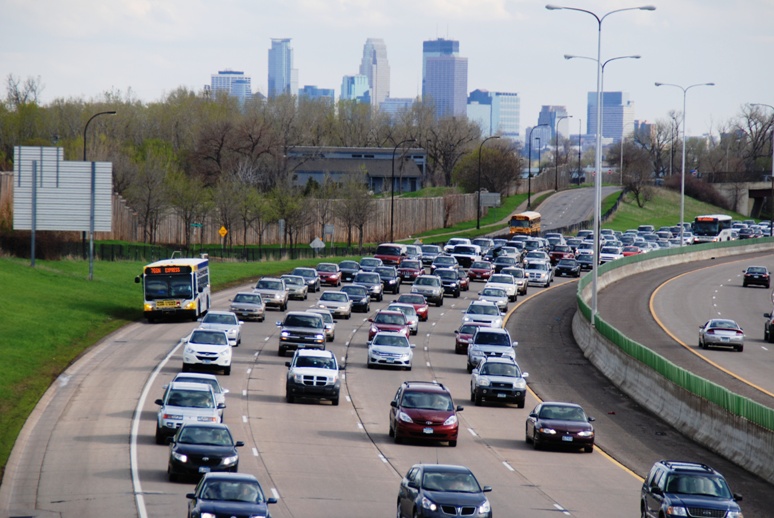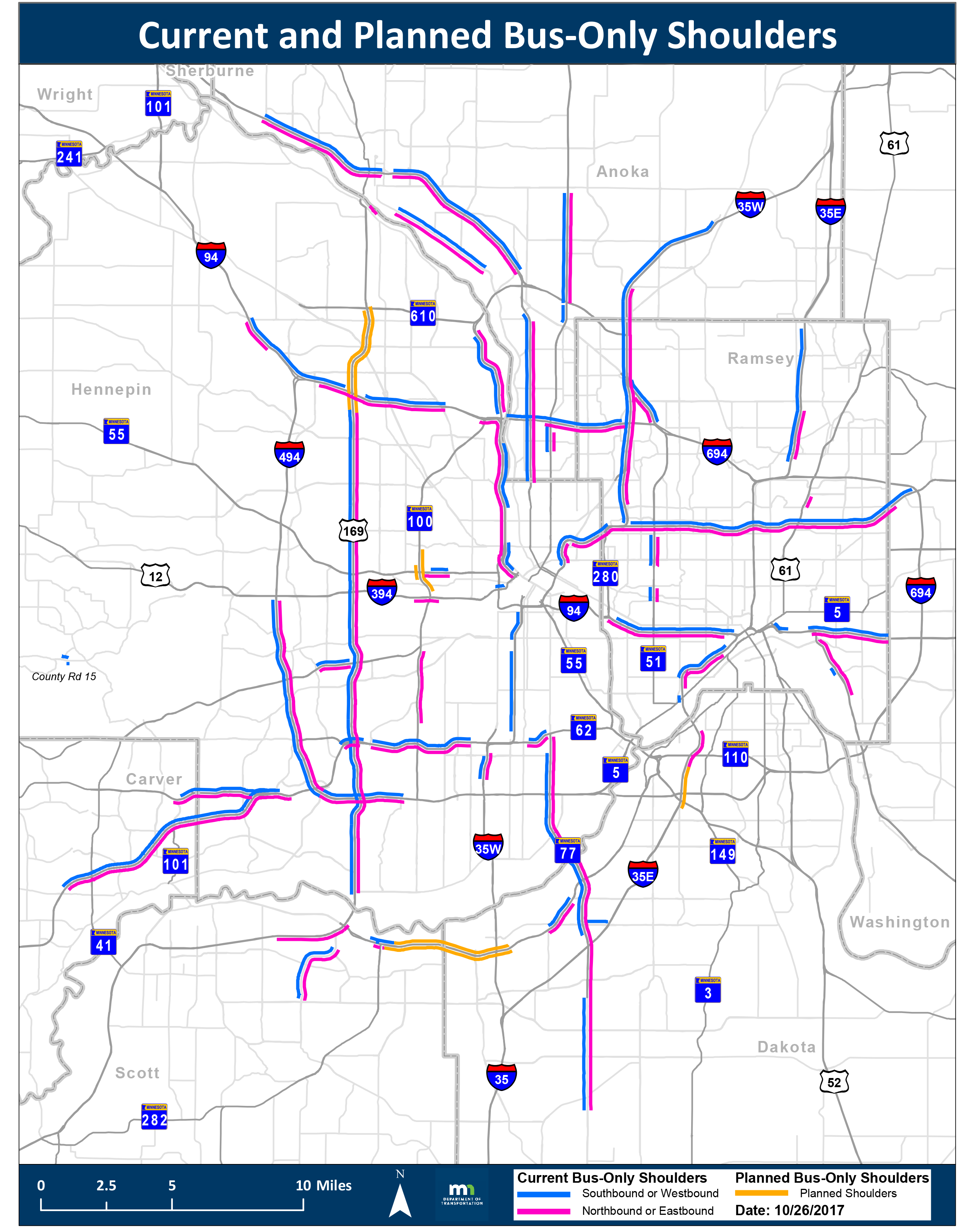Bus-only shoulders move you past congestion

In 1991, Metro Transit pioneered a simple way to get buses out of congestion by traveling on the shoulder instead of sitting in rush-hour traffic. The Twin Cities region now has more than 300 miles of freeway shoulder available to buses. That’s more than three times the number of all metro areas in the country – combined.
A big return with a smaller price tag
Metro Transit wanted a way to get buses through traffic more cost effectively. At the same time, MnDOT was looking for ways to make better use of of existing lanes.
They experimented with bus-only shoulders along Highway 252 and liked the results: bus drivers could stay on schedule, commuters got to work or home faster and ridership increased. Even better, bus-only shoulders cost a fraction of added lanes.
MnDOT found that by allowing transit vehicles to use shoulders, they could move more people more quickly with minimal investment. Now, as roadways are built or reconstructed, shoulders are made to accommodate the extra weight and width of a bus. Since shoulder use is built into the project, the transit advantage adds capacity without significant cost.
When is traffic congested enough for shoulder use?
Bus-only shoulders are used only when certain criteria are met. Before buses can use the shoulder, traffic must be delayed (moving at less than 35 mph) at least once a week. Using the shoulder must save buses more than 8 minutes per mile in travel time. And the roadways must also be used by more than six buses per day.
Today, around half of Metro Transit's bus routes use a bus-only shoulder for at least part of their trip. Many of these are express routes with service to 120+ Park & Ride lots with quick, easy freeway access (often bypassing ramp meters). Travel speed is further enhanced for routes that use the Marq2 express corridor in downtown Minneapolis.
 There’s one near you
There’s one near you
Bus-only shoulders benefit routes across the region, and transit customers save between five and 15 minutes per trip thanks to shoulder use. For additional time savings, buses also use another transit advantage – ramp-meter bypasses – to reach shoulders directly and don’t spend time inching along with traffic at on-ramps.
At one time, 20 miles of bus-only shoulders were being added per year. While expansion has slowed, the region now has 300 miles of bus-only shoulders, ensuring fast, reliable travel times for commuters on thousands of buses daily.
Safety first! Shoulder use is up to the driver
Metro Transit ensures that speed is secondary to safety. While bus drivers are authorized to use designated shoulders, they follow strict guidelines. Thanks to these measures, bus-only shoulders have been extremely effective and very safe. Bus drivers:
> Must not use the shoulder when traffic is moving faster than 35 mph.
> Cannot exceed the speed of traffic by more than 15 mph; max. speed is 35 mph.
> Must yield to any vehicle entering the shoulder, including at freeway ramps or intersections.
> Must join regular lanes when the shoulder is blocked by stalled cars or debris.
Metro Transit drivers are trained to drive on shoulders and can best judge when conditions make it unwise – and unsafe – to use them.
> Good Question: Why don't operators always use bus-only shoulders?